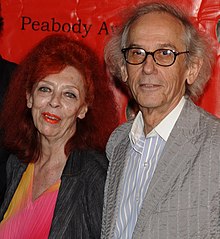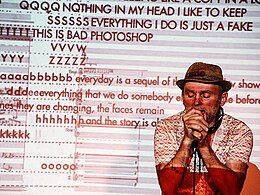https://nymag.com/intelligencer/2020/06/milton-glaser-new-york-and-iny-designer-dies-at-91.html

NYMAG.COM
Milton Glaser, Co-Founder of New York Magazine and Creator of ‘I
 NY,’ Dies at 91
NY,’ Dies at 91A giant of graphic design and illustration for seven decades.
Milton Glaser, Master Designer of ‘I ♥ NY’ Logo, Is Dead at 91
He also created the famous poster of Bob Dylan with psychedelic hair, was a co-founder of New York magazine and produced designs for everything from supermarkets to restaurants to “Mad Men.”
...“Art Nouveau, Chinese wash drawing, German woodcuts, American primitive paintings, the Viennese secession and cartoons of the ’30s were an endless source of inspiration,” he added. “All the things that the doctrine of orthodox modernism seemed to have contempt for — ornamentation, narrative illustration, visual ambiguity — attracted us.”

ImageNearly six million posters featuring Mr. Glaser’s psychedelic Bob Dylan design made their way into homes across the world. Credit...Milton Glaser
Mr. Glaser delighted in combining visual elements and stylistic motifs from far-flung sources. For a 1968 ad for Olivetti, he modified a 15th-century painting by Piero di Cosimo showing a mourning dog, and inserted the Italian company’s latest portable typewriter at the feet of the dead nymph in the original artwork.
For the Dylan poster, a promotional piece included in the 1967 album “Bob Dylan’s Greatest Hits,” he created a simple outline of the singer’s head, based on a black-and-white self-portrait silhouette by Marcel Duchamp, and added thick, wavy bands of color for the hair, forms he imported from Islamic art.
Nearly six million posters made their way into homes across the world. Endlessly reproduced, the image became one of the visual signatures of the era.
“I ♥ NY,” his logo for a 1977 campaign to promote tourism in New York State, achieved even wider currency. Sketched on the back of an envelope with red crayon during a taxi ride, it was printed in black letters in a chubby typeface, with a cherry-red heart standing in for the word “love.” Almost immediately, the logo became an instantly recognized symbol of New York City, as recognizable as the Empire State Building or the Statue of Liberty.
“I’m flabbergasted by what happened to this little, simple nothing of an idea,” Mr. Glaser told The Village Voice in 2011.
After the terrorist attacks of Sept. 11, 2001, T-shirts emblazoned with the logo sold in the thousands, as visitors to the city seized on it as a way of expressing solidarity. Mr. Glaser designed a modified version — “I ♥ NY More Than Ever,” with a dark bruise on the heart — which was distributed as a poster throughout the city and reproduced on the front and back pages of The Daily News on Sept. 19.
Image
 A modified version of Mr. Glaser’s “I ♥ NY” logo, with a bruised heart, was produced after the Sept. 11 terrorist attacks devastated the city.Credit...Milton Glaser
A modified version of Mr. Glaser’s “I ♥ NY” logo, with a bruised heart, was produced after the Sept. 11 terrorist attacks devastated the city.Credit...Milton GlaserMilton Glaser was born on June 26, 1929, in the Bronx, to Eugene and Eleanor (Bergman) Glaser, immigrants from Hungary. His father owned a dry-cleaning and tailoring shop; his mother was a homemaker.
When Milton was a young boy, an older cousin drew a bird on the side of a paper bag to amuse him. “Suddenly, I almost fainted with the realization that you could create life with a pencil,” he told Inc. magazine in 2014. “And at that moment, I decided that’s how I was going to spend my life.”
He took drawing classes with Raphael and Moses Soyer, the social realist artists, before enrolling in the High School of Music & Art in Manhattan (now the Fiorello H. LaGuardia High School of Music & Art and Performing Arts). After twice failing the entrance exam for Pratt Institute, he worked at a package-design company before being accepted by the Cooper Union for the Advancement of Science and Art.
ADVERTISEMENTContinue reading the main story
While at the Cooper Union, he and his classmates — Seymour Chwast, Edward Sorel and Reynold Ruffins — rented part of a loft in Greenwich Village and created a company, Design Plus. They completed one project: cork place mats with a silk-screened design, which they sold to Wanamaker’s department store.

Image
Mr. Glaser in 1974. He was “flabbergasted” by the success of his now iconic New York logo.Credit...Milton Glaser Studio
After graduating from Cooper Union in 1951 and working in the promotion department at Vogue magazine, Mr. Glaser won a Fulbright scholarship to the Academy of Fine Arts in Bologna, Italy, where he studied etching with the still-life painter Giorgio Morandi and, in the time-honored way, drew from plaster casts. The experience left him a fervent believer in the discipline of drawing and an enemy of found images and collage in design work.
“A designer who must rely on cutouts and rearranging to create effects, who cannot achieve the specific image or idea he wants by drawing, is in trouble,” he told the magazine Graphis in 1960.
Returning to New York, Mr. Glaser resumed his partnership with his former classmates, who had created the Push Pin Almanack to advertise their work and allow them to experiment. When they founded Push Pin Studios in 1954, Mr. Glaser was named its president. The studio quickly became recognized for its bright colors, surreal juxtapositions and exaggerated, flattened forms, seen in book jackets (Mr. Glaser designed all the covers for the Signet Classic Shakespeare series), magazine illustrations, record covers, television commercials and typography.
He married Shirley Girton, his replacement at the package-design company that first hired him, in 1957. The couple collaborated on the children’s books “If Apples Had Teeth” (1960), “The Alphazeds” (2003) and “The Big Race” (2005). Mr. Glaser, who lived in Manhattan and Woodstock, N.Y., is survived by his wife.
ADVERTISEMENTContinue reading the main story
Mr. Glaser, whom Newsweek once called “one of the few geniuses in the image-making trade,” was widely credited with creating the pudgy, cartoony style known as “Yellow Submarine” art, popularized by the 1968 animated Beatles film but practiced at Push Pin since the late 1950s.

Image
Mr. Glaser, left, with Clay Felker at New York magazine, which they founded in 1968.Credit...Cosmos Andrew Sarchiapone, via Archives of American Art, Smithsonian Institution
Mr. Glaser joined forces with the editor Clay Felker in 1968 to found New York magazine, where he was president and design director until 1977, imposing a visual format that still largely survives. With his friend, Jerome Snyder, the art director of Scientific American, he wrote a budget-dining column, “The Underground Gourmet,” for The New York Herald Tribune and, later, New York magazine. The column spawned a guidebook of the same name in 1966 and “The Underground Gourmet Cookbook” in 1975.
Mr. Glaser started his own design firm, Milton Glaser Inc., in 1974. A year later he left Push Pin, just as he was being given his own show at the Museum of Modern Art.
“At a certain point we were accepted, and once that happens, everything becomes less interesting,” he said in an interview for “Graphic Design in America: A Visual Language History,” an exhibition at the Walker Art Center in Minneapolis in 1989.

Image
Mr. Glaser designed more than 400 posters over the course of his career, including this one for the play “Angels in America.” Credit...Milton Glaser
He was hired by the British tycoon James Goldsmith in 1978 to redesign the interiors, exteriors and packaging of the Grand Union chain of supermarkets, which Mr. Goldsmith had just acquired. Mr. Glaser designed several projects for the restaurateur Joe Baum, most memorably the Big Kitchen food court on the ground-floor concourse of the World Trade Center, the 1990s redesign of Windows on the World there and the Rainbow Room in Rockefeller Center.
In 1983, with Walter Bernard, Mr. Glaser formed WBMG, a publication design firm that revamped dozens of newspapers and magazines in the United States and abroad, including The Washington Post and O Globo in Brazil. He and Mr. Bernard later collaborated on a history of their design work, “Mag Men: 50 Years of Making Magazines,” which was published in December.
He managed to stay current. In the late 1980s he designed the AIDS logo for the World Health Organization and the logo and packaging for Brooklyn Brewery, using a capital B inspired by the old Brooklyn Dodgers. He designed the logo for Tony Kushner’s Pulitzer Prize-winning play “Angels in America,” and posters for Vespa’s 50th anniversary in 1996 and for the final season of the television series “Mad Men” in 2014.
Mr. Glaser, whose books include “The Milton Glaser Poster Book” (1977), “Art Is Work” (2000) and “Drawing Is Thinking” (2008), taught for many years at the School of Visual Arts in Manhattan. He was the subject of the 2008 documentary film “Milton Glaser: To Inform and Delight.”

Image
Milton Glaser in 2014Credit...Catalina Kulczar
In 2004, he received a lifetime achievement award from the Cooper–Hewitt National Design Museum (now the Cooper Hewitt Smithsonian Design Museum), and in 2009 he became the first graphic designer to receive the National Medal of Arts.
“I’m a person who deals with visual material whatever it is — architecture, an object, a set of plates, wallpaper — right now I’m doing T-shirts,” he told Aileen Kwun and Bryn Smith for their book “Twenty Over Eighty: Conversations on a Lifetime in Architecture and Design” (2016). “I know a lot about the way things look, and as a consequence, I try to see how much of that world I can embrace.”
Jenny Gross contributed reporting.







 📙
📙 🔶 signing at our
🔶 signing at our 











